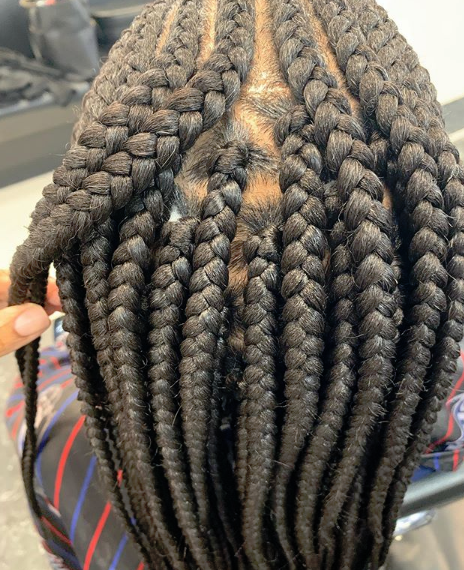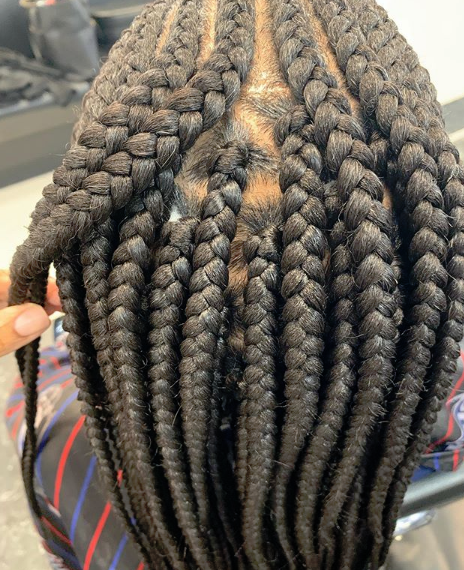Have you ever wondered if human hair wigs can cause an allergic reaction? Well, let’s dive into this topic and find out! Human hair wigs are made from real human hair, which undergoes a thorough selection process to ensure only the healthiest strands are used. The hair is carefully treated and woven into various wig cap designs, offering a natural appearance and unmatched versatility. In this article, we will explore the world of human hair wigs in detail and see how they can transform your look. We will also discuss their durability, comfort, and the important role they play in providing solutions for hair loss. So, stay tuned to learn more about this fascinating hair fashion innovation!

Exploring Allergic Reactions to Human Hair Wigs
Understanding Allergies and Their Causes
Allergies are a common occurrence, affecting millions of people worldwide. They occur when the immune system mistakenly identifies a harmless substance as a threat and produces an allergic response. This response can manifest in a variety of symptoms, ranging from mild discomfort to severe reactions.
Potential Allergenic Components in Human Hair Wigs
While human hair wigs are generally considered safe and hypoallergenic, it is possible for individuals to have allergic reactions to certain components of the wig. These components can include the adhesives used to secure the wig, the dyes and chemicals used in processing the hair, or even the natural proteins found in human hair itself.
Common Symptoms of Allergic Reactions to Wigs
If you experience an allergic reaction to a human hair wig, you may notice a variety of symptoms. These can include itching, redness, swelling, or a rash on the scalp or other areas in contact with the wig. Some individuals may also experience symptoms such as sneezing, watery eyes, or difficulty breathing if the allergen is inhaled.
Determining Allergies to Human Hair Wigs
Consulting a Medical Professional
If you suspect that you are having an allergic reaction to a human hair wig, it is essential to consult a medical professional. They can help identify the specific allergen causing your symptoms and recommend appropriate treatment options.
Testing for Allergies to Wig Materials
In some cases, your doctor may recommend allergy testing to identify the specific allergens causing your reaction. This can involve a patch test, where small amounts of various wig materials are applied to your skin and observed for any signs of an allergic response.
Identifying Personal Sensitivities
It is also important to pay attention to your body and any patterns you notice regarding your allergic reactions. Keep track of which wigs or materials seem to cause a reaction and discuss these findings with your medical professional. This information can help in identifying and avoiding potential allergenic triggers in the future.

Preventing Allergic Reactions to Human Hair Wigs
Proper Cleaning and Maintenance of Wigs
Regular cleaning and maintenance of your human hair wig can help prevent allergic reactions. Use mild, hypoallergenic shampoos and conditioners specifically designed for wigs. Avoid exposing the wig to excessive heat, as this can cause damage to the hair and potentially release allergenic particles.
Choosing Hypoallergenic Wig Materials
When purchasing a human hair wig, consider opting for hypoallergenic materials. Look for wigs that are specifically labeled as hypoallergenic or made from natural, non-irritating materials. Avoid wigs that contain harsh chemicals or dyes that may trigger an allergic reaction.
Wearing Wig Caps and Protective Layers
To minimize direct contact between your scalp and the wig, consider wearing a wig cap or a protective layer under the wig. These barriers can help prevent the transfer of allergens from the wig to your skin and reduce the risk of an allergic reaction.
Managing Allergic Reactions to Human Hair Wigs
Topical Treatments for Allergy Relief
If you experience mild symptoms from an allergic reaction to a human hair wig, over-the-counter topical treatments may provide relief. These can include soothing creams or ointments containing ingredients such as hydrocortisone or calamine lotion.
Avoiding Allergenic Triggers
Identifying and avoiding the specific components of the wig that trigger your allergies is crucial in managing allergic reactions. This may involve switching to a different type of wig or opting for wigs made from alternative materials, such as synthetic fibers.
Seeking Medical Attention for Severe Reactions
In cases of severe allergic reactions, such as difficulty breathing or anaphylaxis, it is vital to seek immediate medical attention. These reactions can be life-threatening and require prompt medical intervention.

Alternative Wig Options for Allergy-Prone Individuals
Exploring Synthetic Wig Options
For individuals prone to allergic reactions to human hair wigs, synthetic wigs can be a viable alternative. Synthetic wigs are often made from hypoallergenic materials and do not contain the same natural proteins as human hair, reducing the risk of allergic reactions.
Considering Wigs Made from Alternative Materials
There are various alternative materials used in wig construction, such as heat-friendly synthetic fibers or plant-based fibers like bamboo or corn silk. These materials can provide a natural appearance while minimizing the risk of allergic reactions.
Customized Wig Solutions for Allergies
If you have specific allergies or sensitivities, working with a wig specialist or hair professional to create a customized wig can provide an ideal solution. A customized wig can be tailored to your specific needs, ensuring it is made from materials that will not trigger allergic reactions.
Educating Yourself on Human Hair Wig Allergies
Researching Common Wig Allergens
Take the time to research and educate yourself on common allergens found in human hair wigs. Understanding the components that can trigger allergic reactions can help you make informed decisions when selecting a wig and prevent future allergic episodes.
Learning from Personal Experiences and Testimonials
Seek out personal experiences and testimonials from individuals who have dealt with allergic reactions to human hair wigs. Online forums and support groups can be valuable resources for learning about others’ experiences and finding tips and advice for managing allergies.
Staying Informed on New Research and Developments
Stay up to date with the latest research and developments in the field of wig allergies. As our understanding of allergies and sensitivities continues to evolve, new materials and technologies may become available that further minimize the risk of allergic reactions to human hair wigs.

Consulting Professionals for Allergic Reactions to Wigs
Visiting Dermatologists and Allergists for Expert Advice
Seeking the expertise of dermatologists and allergists can provide valuable insight into managing allergic reactions to wigs. These professionals can help identify specific allergens and recommend appropriate treatments or alternative options.
Seeking Help from Wig Specialists or Hair Professionals
Wig specialists and hair professionals are knowledgeable about the different wig options available and can provide guidance on selecting wigs that are less likely to cause allergic reactions. They can also offer advice on caring for and maintaining wigs to minimize the risk of allergenic triggers.
Support Groups and Communities for Wig Wearers with Allergies
Connecting with other individuals facing similar challenges can provide a sense of community and support. Joining support groups or communities specifically for wig wearers with allergies can allow you to share experiences, exchange tips, and find comfort in knowing you are not alone in your struggles.
Addressing Misconceptions About Human Hair Wig Allergies
Separating Fact from Fiction
There are various misconceptions surrounding human hair wig allergies. It is essential to separate fact from fiction and rely on accurate information when making decisions regarding wig selection and allergy management.
Common Myths and Misunderstandings About Wig Allergies
Some common myths about wig allergies include the belief that only synthetic wigs can cause allergic reactions or that washing the wig will eliminate all potential allergens. It is crucial to educate yourself on these misconceptions to make informed decisions regarding your wig choices.
Dispelling Stereotypes and Myths
By dispelling stereotypes and myths surrounding wig allergies, we can foster a greater understanding and acceptance of individuals who rely on wigs for various reasons. Understanding that allergies can affect anyone, regardless of their wig choice, can help promote inclusivity and support within the wig-wearing community.

Case Studies and Personal Stories of Wig Allergies
Real-life Accounts of Allergic Reactions to Wigs
Real-life stories from individuals who have experienced allergic reactions to human hair wigs can provide valuable insights and perspectives. These stories can shed light on the challenges faced by those with wig allergies and the strategies they have used to overcome them.
How Allergies Impact Wig Wearers’ Lives
Understanding the impact allergies can have on the lives of wig wearers is crucial in fostering empathy and support. Allergies can affect one’s self-esteem, daily routines, and overall quality of life. By recognizing these challenges, we can work towards creating a more inclusive and accommodating environment for individuals with wig allergies.
Overcoming Challenges and Finding Solutions
Despite the challenges posed by allergic reactions to wigs, many individuals have found ways to overcome them. Through trial and error, they have discovered alternative materials, developed personalized care routines, and found support and solutions that allow them to continue wearing wigs comfortably.
The Future of Human Hair Wigs and Allergies
Advancements in Wig Technology and Materials
As technology and materials continue to advance, so too does the world of human hair wigs. Innovations in wig construction can lead to the development of new materials that are even more hypoallergenic, further reducing the risk of allergic reactions.
Innovations in Allergy Prevention and Management
Advancements in allergy prevention and management can also have an impact on the world of wig allergies. Research into new treatments, medications, and techniques may offer additional options for individuals prone to allergic reactions.
Potential Solutions for Allergy-Free Wig Wear
With ongoing research and development, there is hope for the future of allergy-free wig wear. From improved materials to advanced allergy testing and treatment options, the possibilities for reducing the risk of allergic reactions to human hair wigs are promising.
Conclusion
While human hair wigs offer countless style possibilities and solutions for hair loss, it is important to be aware of the potential for allergic reactions. By understanding the causes and symptoms of allergies and taking proactive measures to prevent and manage allergic reactions, individuals can continue to enjoy the benefits of human hair wigs without compromising their health or comfort. Whether through proper maintenance, alternative wig options, or seeking professional advice, finding the right solution is possible. Ultimately, human hair wigs remain a valuable tool for self-expression, confidence, and personal style.
